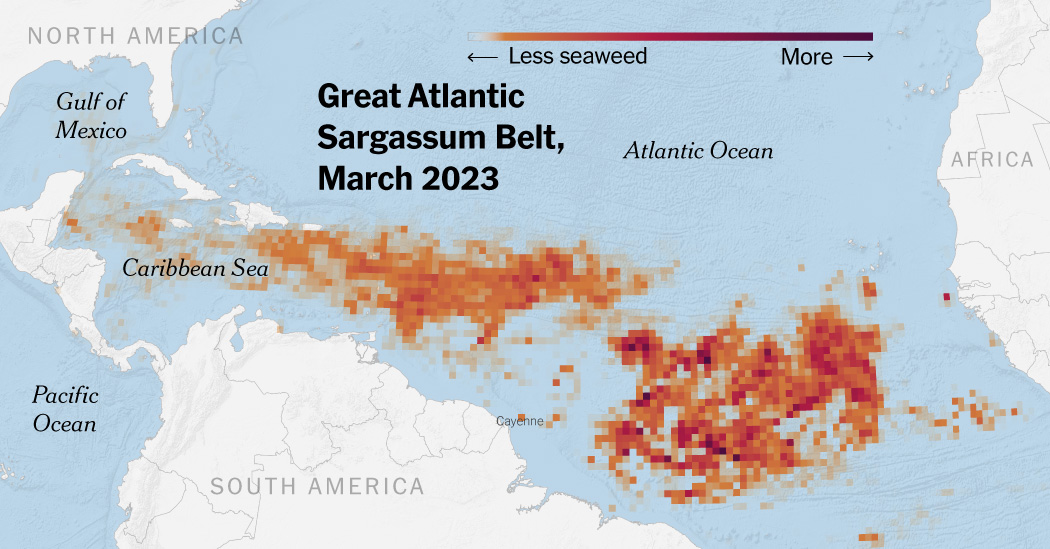California to Require Half of All Heavy Trucks Sold by 2035 to Be Electric
WASHINGTON — The Biden administration on Friday granted California the legal authority to require that half of all garbage trucks, tractor-trailers, cement mixers and other heavy vehicles sold in the state must be all-electric by 2035, an aggressive plan designed to clean up the worst polluters on the road.
The pioneering truck rule goes beyond federal requirements, which is why the state needed permission from the administration to enact it. It comes on the heels of an ambitious regulation passed last year by California that requires all new passenger vehicles sold in the state to be electric by the same target year, 2035.
Together, the two moves would propel California to the forefront of the race to eliminate carbon dioxide emissions from transportation, the sector of the American economy that generates the most greenhouse gases.
As the world’s fifth-largest economy, the state of California has tremendous market muscle; its new rules can force changes throughout the automotive industry and spur other states to follow suit. In fact, six other states have already adopted truck rules modeled after California’s new requirement but had been waiting for federal action in order to enforce them.
But some say the mandate that half of all heavy trucks sold be electric by 2035 is so ambitious as to be nearly impossible, given that fewer than 2 percent of heavy trucks sold in the United States last year were all-electric.
The legal waiver from the Environmental Protection Agency allows California to step out ahead of new federal standards on climate warming truck pollution, which the Biden administration hopes to unveil later this year. In December, the E.P.A. announced a new federal rule to cut nitrogen oxide from heavy vehicles, the first time in 20 years that it had tightened tailpipe emissions from trucks.
“This is a moment to mark because it’s a preview of the order of magnitude of the change in the industry,” Gavin Newsom, the Democratic governor of California, said in an interview. “There’s a power in these waivers and that power is emulation. We adopt through these waivers the principles and policies that lead to innovation and investment.”
California has a history of being at the vanguard when it comes to environmental policy, setting the pace that is often followed by the federal government. The state’s bold new standards for passenger vehicles are helping to shape a federal proposal for national car pollution rules, which could be unveiled as soon as mid-April.
“Under the Clean Air Act, California has longstanding authority to address pollution from cars and trucks,” said Michael Regan, administrator of the E.P.A. “Today’s announcement allows the state to take additional steps in reducing their transportation emissions through these new regulatory actions.”
Environmentalists celebrated the broader implications of the move.
“Just as the Golden State’s leadership played a pivotal role in bringing us the catalytic converter five decades ago, it is playing a key role now in accelerating our transition to an electric future,” said Paul Cort, an attorney with Earthjustice, a non-profit group. With six other states joining California in the new truck rule, “some 75 million Americans are already lined up to breathe cleaner air, ” he said.
Jed Mandel, the president of the Engine Manufacturers Association, which makes equipment for heavy-duty trucks, said that his members recognize California’s legal right to impose the rule, but worry that it could harm their business.
“We remain concerned that limiting manufacturers’ lead time to produce compliant vehicles will present significant challenges. Adequate lead time, regulatory stability, and the necessary zero-emission recharging and refueling infrastructure are imperative for manufacturers to develop, build, and sell the customer-acceptable, effective products” capable of meeting the mandate, Mr. Mandel said in a statement.
The electric truck mandate was approved by the California Air Resources Board in 2020 but needed a waiver from the E.P.A. because it is stricter than federal standards.
When it takes effect next year, the rule will pertain to sales of trucks ranging in size from delivery vans to big rigs. By 2035, 55 percent of delivery vans and small trucks, 75 percent of buses and larger trucks, and 40 percent of tractor-trailers and other big rigs sold in the state would have to be all-electric.
Prices for electric trucks start at about $100,000 and can reach the high six figures. Buyers, including delivery and construction companies, could get some help from last year’s Inflation Reduction Act, which for the next decade offers up to $40,000 in tax credits to purchasers of all-electric trucks.
Some manufacturers have already positioned themselves to comply. Volvo, which makes tractor-trailer trucks, has set a target that 50 percent of its truck sales would be all-electric by 2030.
But a fierce legal fight to undercut the rules is already advancing in the courts. Republican attorneys general from 17 states are challenging California’s ability to enact state pollution standards that are tougher than federal standards. That case, Ohio vs. E.P.A., is set to be heard in the United States Court of Appeals for the District of Columbia Circuit later this year. Regardless of the decision in that case, it is expected to be appealed to the Supreme Court.
Requiring manufacturers to sell a certain percentage of electric vehicles is a step beyond regulating pollution from tailpipes, said Steven G. Bradbury, who served as the chief legal counsel for the Transportation Department during the Trump administration.
“If California by regulation can force the automakers and truck manufacturers to change the types of vehicles they produce, that’s effectively going to impose those restrictions on the rest of the nation,” Mr. Bradbury said. “And you haven’t yet got a business case that’s proven in the market that you can actually operate battery-operated heavy trucks and make it viable.”
Truckers said the cost and difficulty of complying with the new regulations would be overwhelming.
“A lot of the California truck rules that have been adopted and enacted recently are starting to push truck drivers out of the state,” said Jay Grimes, director of federal affairs for the Owner-Operator Independent Drivers Association, which represents truckers. “Drivers don’t want to work in California anymore. They’re skeptical of the rapid timeline on this transition to electric trucks. Can a trucker get a charge that will take them on a highway for two or three days? Is the technology ready for prime time?”
Batteries for electric trucks can weigh thousands of pounds more than conventional combustion engines, which would limit the amount of goods that truckers can haul, Mr. Grimes said. Others questioned whether enough electric truck charging stations would be built fast enough to support big rigs on long distance trips.
Drew Kodjak, executive director of the International Council on Clean Transportation, a research organization, said some of those concerns were merited.
“There’s a great deal of challenge with the electrification of heavy duty vehicles,” he said. “But there are elements that lead to optimism.”
For example, he said, for trucking, construction or delivery companies that operate truck fleets, the combination of government tax incentives and savings on gasoline maintenance could significantly add up over time.
“Companies like FedEx look at the bottom line over the total life span of a vehicle,” Mr. Kodjak said. “And when they look long-term, the calculations for this become more optimistic.”


